Ever found yourself ready to whip up that savory dish, only to realize you’re fresh out of sage? Oops! No need to hit pause on your cooking groove.
We’ve all been there, scrounging through our spice rack for a miracle.
Good news—solutions are closer than you think!
Sage packs a punch with its earthy, slightly peppery flavor. It’s a staple in many kitchens for a good reason.
Lucky for us, several other herbs can step in and save the day without skipping a beat.
This isn’t about settling for second best; it’s about smart, tasty swaps that keep the flavor party going.
Ready to dive into the top five sage substitutes that keep your meals on point?
What is Sage?

At first glance, sage may not seem all that remarkable.
Its small leaves and grayish-green color make it a distinctly unremarkable-looking herb.
But don’t be fooled by its appearance; a valuable culinary tool lies behind this seemingly dull exterior.
Sage has long been prized for its distinctive flavor and aroma, ideally suited to infuse dishes with richness and complexity.
Whether used fresh or dried, the unique taste of sage lends an earthy quality to meat, seafood, sauces, dressings, and baked goods.
Thus, it is often featured in recipes for duck and other game meats and traditional holiday treats like stuffing and cranberry sauce.
And with its wide range of applications in the kitchen, sage truly deserves to be called one of the most versatile ingredients in any cook’s arsenal.
The 5 Best Substitutes for Sage
Sage is a popular herb known for its distinct flavor and aroma.
However, if you find yourself without sage or prefer alternative options, there are several substitutes available.
In this guide, we will compare the top 5 substitutes for sage, discussing their key characteristics and suggesting proper ratios to help you find suitable alternatives.
| Substitute | Key Characteristics | Proper Ratio |
|---|---|---|
| Marjoram | Mild and slightly sweet flavor; similar aromatic qualities to sage | Use an equal amount of dried marjoram as a substitute for dried sage |
| Rosemary | Strong, pine-like flavor; adds a savory and earthy taste to dishes | Use half the amount of rosemary as a substitute for sage |
| Thyme | Earthy and slightly minty flavor; complements various dishes | Use an equal amount of dried thyme as a substitute for dried sage |
| Oregano | Pungent and slightly bitter flavor; adds depth to recipes | Use an equal amount of dried oregano as a substitute for dried sage |
| Savory | Herbaceous and slightly peppery flavor; reminiscent of sage with milder intensity | Use an equal amount of dried savory as a substitute for dried sage |
Now, let’s dive into each substitute in more detail:
1 – Marjoram
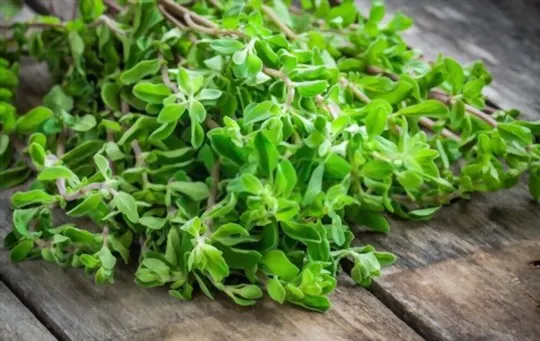
Marjoram is a fragrant herb that has a distinctly peppery flavor.
Cultivated since ancient times, it has long been prized for its culinary uses and many health benefits.
This versatile herb can be added to soups, stews, sauces, and side dishes to add a hint of heat.
In addition to tasting great, marjoram is also rich in nutrients like Vitamin A and iron.
And thanks to its strong antiseptic properties, marjoram can help soothe coughs, treat stomach aches, and even fight the early stages of some types of cancer.
Whether used fresh or dried, this versatile seasoning spice is essential in any kitchen.
- Key Characteristics: Marjoram has a mild and slightly sweet flavor with similar aromatic qualities to sage. It can be used as a substitute for dried sage in various recipes.
- Proper Ratio: Use an equal amount of dried marjoram as a substitute for dried sage. Adjust the quantity based on personal preference and desired flavor intensity.
2 – Rosemary
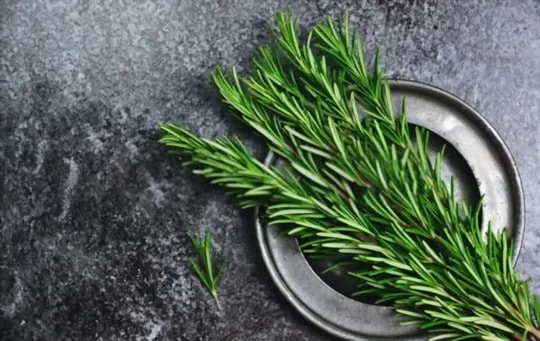
Are you looking for a sage substitute for your Thanksgiving stuffing? Rosemary may be the perfect herb to use.
Although it has a more robust flavor than sage, rosemary can provide a similar earthy taste to your dish.
This evergreen herb is also rich in antioxidants and has anti-inflammatory properties.
Rosemary is a versatile herb that can be used in many different dishes – not just stuffing.
Try using it to flavor roasted potatoes or grilled veggies.
You can even add it to homemade bread or pizza dough for a unique flavor.
- Key Characteristics: Rosemary has a strong, pine-like flavor that adds a savory and earthy taste to dishes. While it may not replicate the exact taste of sage, it can complement various recipes.
- Proper Ratio: Use half the amount of rosemary as a substitute for sage. Rosemary has a more robust flavor, so adjust the quantity accordingly.
3 – Thyme
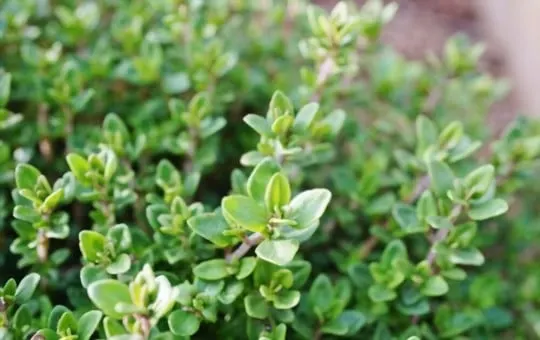
With its slightly spicy flavor, thyme is a versatile ingredient that is an ideal substitute for sage.
Whether cooking a savory dish or adding herbs to a sauce, thyroid provides the perfect touch of flavor without overpowering the other ingredients.
Additionally, thyme is much more widely available than sage, making it easier and more economical to use in your cooking.
Whether you are substituting dried or fresh thyme for sage, this herb will help bring out the best flavors in your dishes and keep your culinary creations bursting with flavor.
- Key Characteristics: Thyme offers an earthy and slightly minty flavor that complements a wide range of dishes. It can be used as a substitute for dried sage to add depth to recipes.
- Proper Ratio: Use an equal amount of dried thyme as a substitute for dried sage. Adjust the quantity based on personal preference and desired flavor intensity.
4 – Oregano

When looking for a flavorful herb to use in place of sage, oregano is often the top choice.
It boasts a bold and savory aroma that is similar to that of sage, but it can also be used in many of the same ways.
Oregano pairs well with poultry and meat dishes, adding an aromatic and slightly earthy touch to slow-cooked roasts or stews.
It can also season homemade soups, stuffing mixes, or pasta sauces.
And because it grows quickly both outdoors and indoors, oregano is also an excellent choice for home gardeners who want to experiment with new flavor combinations.
Whether you’re looking for an herb that can replace traditional sage or just hoping to try something new, oregano is ideal for any culinary application.
- Key Characteristics: Oregano has a pungent and slightly bitter flavor that adds depth to recipes. While it may have a different profile than sage, it can still enhance the overall taste.
- Proper Ratio: Use an equal amount of dried oregano as a substitute for dried sage. Adjust the quantity based on personal preference and desired flavor intensity.
5 – Savory
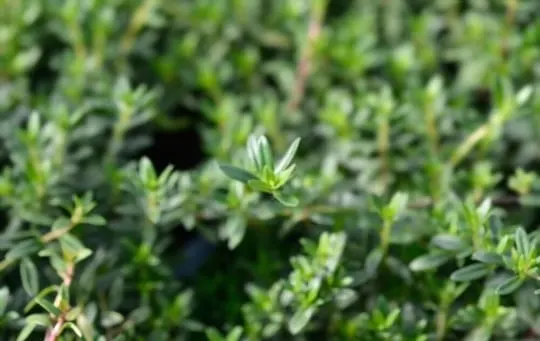
Savory is one of those oft-overlooked herbs that can add flavor and depth to your cooking.
Unlike many other popular herbs like mint or rosemary, savory has a more complex, earthy taste that lends itself beautifully to a wide range of dishes.
Moreover, its pungent aroma can transform the flavors of roasted meats, hearty stews, and creamy soups.
So if you’re looking for a versatile herb to brighten up your kitchen repertoire, look no further than savory.
Whether dried or fresh, this mildly peppery herb is a welcome addition to all of your favorite recipes.
And with its rich mineral content and total nutritional value, savory is much more than just an alternative to sage.
- Key Characteristics: Savory has an herbaceous and slightly peppery flavor reminiscent of sage but with a milder intensity. It can be used as a direct substitute for dried sage in various recipes.
- Proper Ratio: Use an equal amount of dried savory as a substitute for dried sage. Adjust the quantity based on personal preference and desired flavor intensity.
Conclusion
Sage is a popular herb with a long history of use in cooking and medicine.
Unfortunately, it can be difficult to find in stores, and it can also be quite expensive.
Luckily, several sage substitutes can be used in its place.
Rosemary, thyme, and oregano are all good choices, as they have a similar flavor profile.
Marjoram and savory are also good options, although they will impart a slightly different flavor to your dish.
Ultimately, the best sage substitute will depend on your personal preferences and the dish you are making.
With a little experimentation, you will find the perfect replacement for sage.
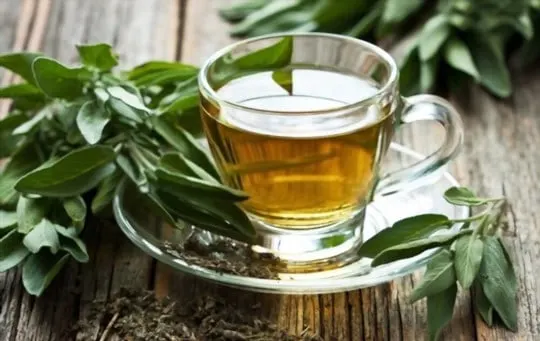
The 5 Best Substitutes for Sage
Ingredients
- Marjoram
- Rosemary
- Thyme
- Oregano
- Savory
Instructions
- Pick your favorite substitute from the list above.
- Follow cooking directions for your selected substitute with the proper ratio of ingredients.

Andrew Gray is a seasoned food writer and blogger with a wealth of experience in the restaurant and catering industries. With a passion for all things delicious, Andrew has honed his culinary expertise through his work as a personal chef and caterer.
His love for food led him to venture into food writing, where he has contributed to various online publications, sharing his knowledge and insights on the culinary world. As the proud owner of AmericasRestaurant.com, Andrew covers a wide range of topics, including recipes, restaurant reviews, product recommendations, and culinary tips.
Through his website, he aims to inspire and educate fellow food enthusiasts, offering a comprehensive resource for all things food-related.

Leave a comment